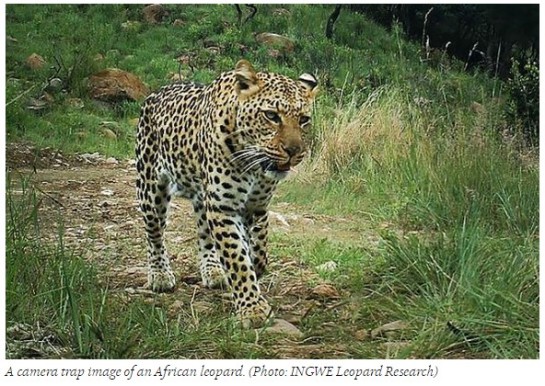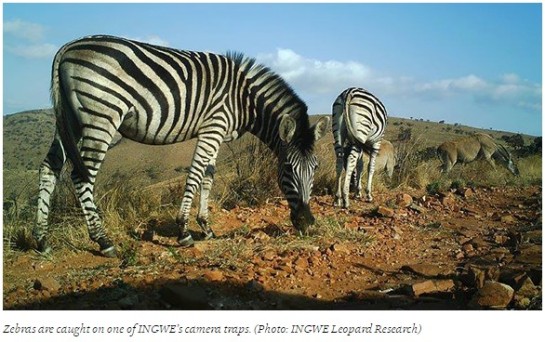http://www.takepart.com/article/2015/02/20/internet-cat-obsession-save-gorgeous-feline
February 20, 2015 By Taylor Hill
Taylor Hill is TakePart’s associate environment and wildlife editor.
full bio
Conservation biologists want to pipe images of leopards on the prowl into your living room.
All you have to do is help fund their Kickstarter.
To see how the species is doing in the country’s unprotected areas, INGWE Leopard Research has been monitoring South African wildlife outside the country’s national parks and refuges since 2004.
But how do you keep an eye on elusive wild animals, particularly night-loving creatures like leopards? Install a network of motion-sensitive cameras in the bush, which automatically snap photos whenever an animal walks in front of them.
An INGWE camera trap. (Photo: INGWE Leopard Research)
So INGWE is crowdfunding a campaign to put 50 such cameras in the field.
“Each little camera covers its own research area that is cross-referenced with the rest of the network, to give us an insight into particular leopards’ locations or updates as to the numbers of the entire population,” the group’s Kickstarter page says.
If the fund-raiser succeeds, backers will earn the group’s gratitude and a little bit more: INGWE will send contributors pictures taken by the camera traps they sponsored.
Zebras are caught on one of INGWE’s camera traps. (Photo: INGWE Leopard Research)
Donate $15 for a 6″ x 4″ photo of a leopard captured by the cameras. Give $120 and you get your very own camera: INGWE will send you every image it takes for a year.
“The camera trap is going to connect you to the African Bush,” Dan Swan, operations intern at INGWE, said in a video post. “It’s a place where there’s a massive variety of wildlife, and it’s this device that’s going to bring all of that wildlife to you in the comfort of your home.”
What do the researchers get out of it?
“The African leopard is the last of Africa’s ‘big five’ animals roaming outside of protected areas in South Africa, and that sadly means it is persecuted,” Will Fox, research founder at INGWE, said in a video post. “Even though the leopard has been researched for many years, we don’t have the data of how many leopards are out there, and more importantly, what their behaviors are.”
The camera trap network will help fill in those gaps and inform better decisions on where land for leopards should be preserved and protected.
“The African leopard is the last of Africa’s ‘big five’ animals roaming outside of protected areas in South Africa, and that sadly means it is persecuted,” Will Fox, research founder at INGWE, said in a video post. “Even though the leopard has been researched for many years, we don’t have the data of how many leopards are out there, and more importantly, what their behaviors are.”
The camera trap network will help fill in those gaps and inform better decisions on where land for leopards should be preserved and protected.
“The more cameras we have,” Fox added, “the more we can protect African leopards.”


